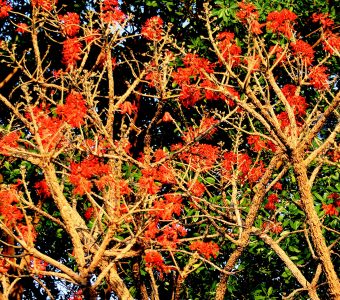
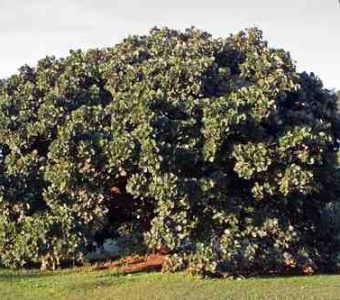
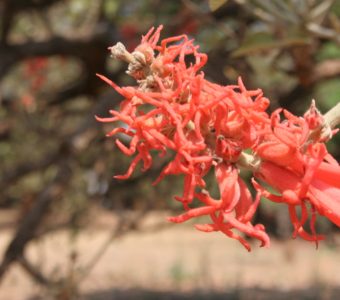
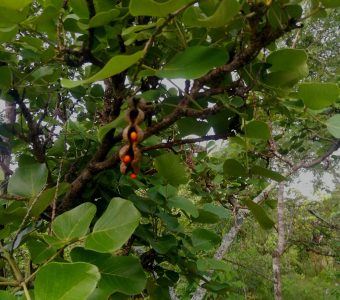
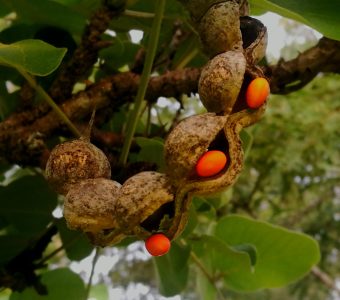
Botanical Name: Erythrina abyssinica Lam. Ex DC.
Synonym: Erythrina tomentosa R.Br. ex A.Rich
Common Name: Red Hot Poker Tree, Coral Tree
Plant Family: Fabaceae, sub family Faboideae
Origin: Africa
References: Coates Palgrave p.400, Joffe p.111, Johnson 1 p.116, Storrs 1 p.65-66. S.A. No. -, Zimb. No. 363
Description: Medium sized thickset deciduous tree with well-branched rounding crown. The large round leaves, almost as broad as long, provides shade in the summer. It is leafless for the 3 winter months, when it flowers. It has hooked thorns on its trunk and branches.
Features of Particular Interest: Spectacular scarlet to brick red spiky flowers, flowers cover the tree on bare branches after the tree has lost its leaves, at the height of the dry season when everything else is bare. Petals are narrow forming a spiky ball. The flowers attract a plethora of different nectar -eating birds. The seed pods (about 10 cm long) split to expose “lucky beans” which are red and black, highly decorative but are reported to be poisonous.
Height and Spread: 8m x 8m rounded shape, sparse crown.
Periods of Interest:
Leaf: October to May.
Flowering: July to September.
Fruiting: October to March.
Cultivation
Soil and Moisture: It likes deep well-drained soil, but can tolerate poor soils. It requires little water.
Aspect: It prefers full sun and warm climate. It requires deep well-drained soil, but can tolerate poor soils. It requires little water.
Hardiness: It is drought resistant, but not frost resistant when young.
Maintenance and Pruning: E. abyssinica grows fast, up to 1.5m per year, if watered.
Propagation: It grows easily from seed or truncheon.
Problems and Drawbacks: It is not a child-friendly climbing tree because of its thorny bark. It has a fairly aggressive root system and should not be planted too close to the house or walls. It may be considered messy in June and July as it drops its leaves, but this also provides good leaf compost.
Use and Associated Planting: E. abyssinica is best used as a specimen tree on large lawn, in front of the house. Not suitable for car parks.
